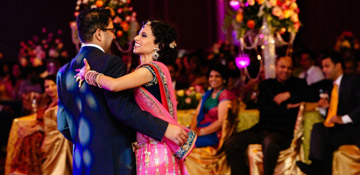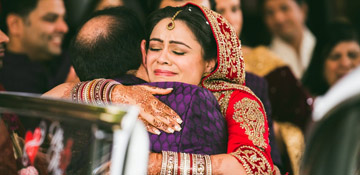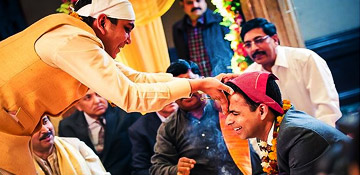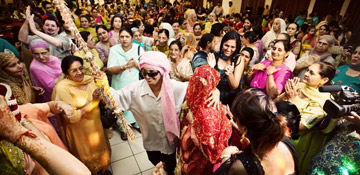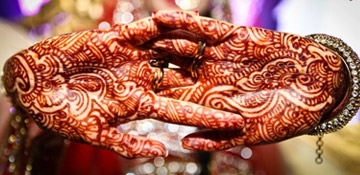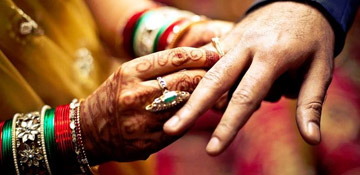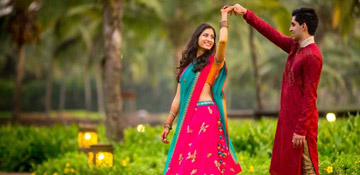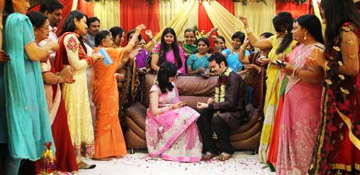Wedding in India is much more than invitations, décor, entertainment, fineries and clothes. It is first of all the bondage of two hearts and mental compatibility. Families play a major part in Indian weddings. Traditions and ceremonies are integral part of the wedding factor. Wedding ceremonies in India are elaborate fares lasting for four to five days. The occasion is divided into three parts- pre marriage ceremonies, the main day function, and post marriage ceremonies.
The main day of the wedding involves rigorous rituals and traditions. Each of the rituals has its own role and symbolic significance. Sapta Padi is one of the integral part of the main marriage ceremony which involves the bride and groom taking their marriage vow while completing the seven rounds together. Mantras of loyalty, love and commitment are chanted while completing the rounds. Wedding ceremonies in India are no doubt elaborate and time consuming. However each traditions and ceremonies have their own significance. Moreover weddings in India also give everyone a chance to get together. Relatives travel long distance to be there beside their loved ones on this special occasion. It speaks of the strong sense of intimacy in Indians. It also shows that by nature Indians are social beings.
Pre Wedding Ceremonies in India forms an integral part of the Wedding ceremonies in India. Before the main day occasion, a lot of ceremonies and traditional rituals are performed as per Hindu norms. These may be different for the different races and clans. However each of the custom has one thing in common and that is to prepare the bride and the bride groom for the auspicious marriage day. Some of the most important pre weeding rituals are sangeet, haldi, mehendi and tilak. The bride grooms and brides dress in their fineries and are surrounded by all members of the family and friends. The occasions are further enlivened by songs, dance mehendi rituals and general discussions on love, marriage, and after marriage commitments.
After the elaborate wedding ceremony, one still have to complete the Post Wedding Ceremonies in India to complete the whole marriage ritual. According to Hindu norms when the bride departs with her groom from her parental house, she is blessed by all her relatives and friends. This is known as Vidaai and forms an integral part of the post weeding ceremony. It may be performed differently in different regions and amongst different races. Asshirvaad or blessing ceremony is followed by Pani Varna or aarti of the bride in the grooms place. The bride knocks over a vial of mustard oil or an urn of rice before entering the Groom’s place. This is regarded as an auspicious occasion. It is supposed to be a symbolic representation of the Laxmi goddess.
- All
- Ceremonies



